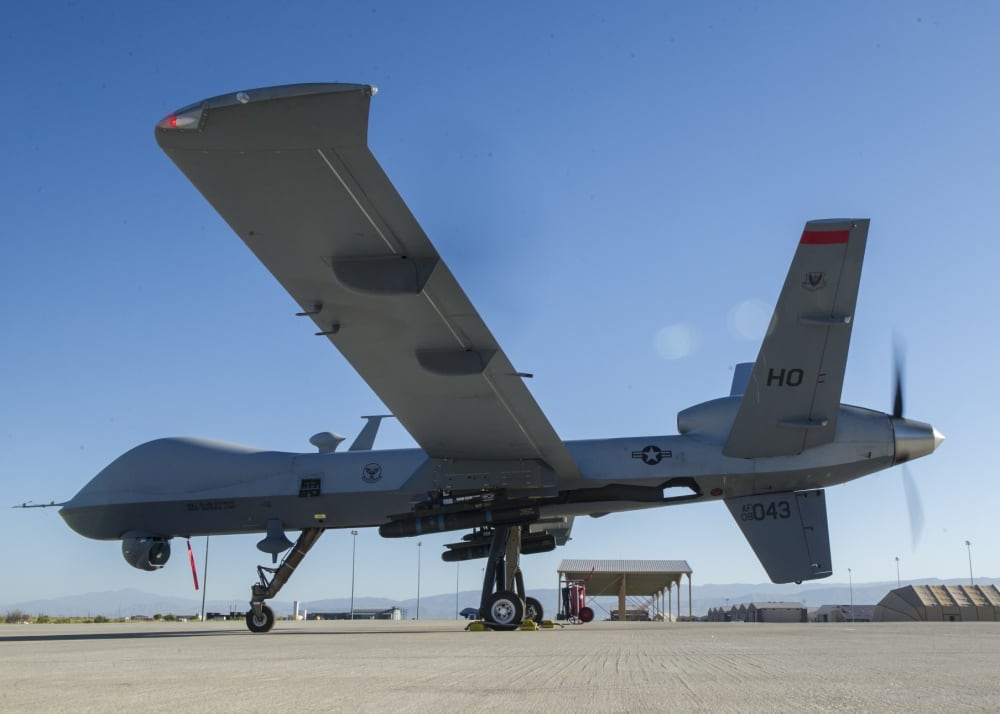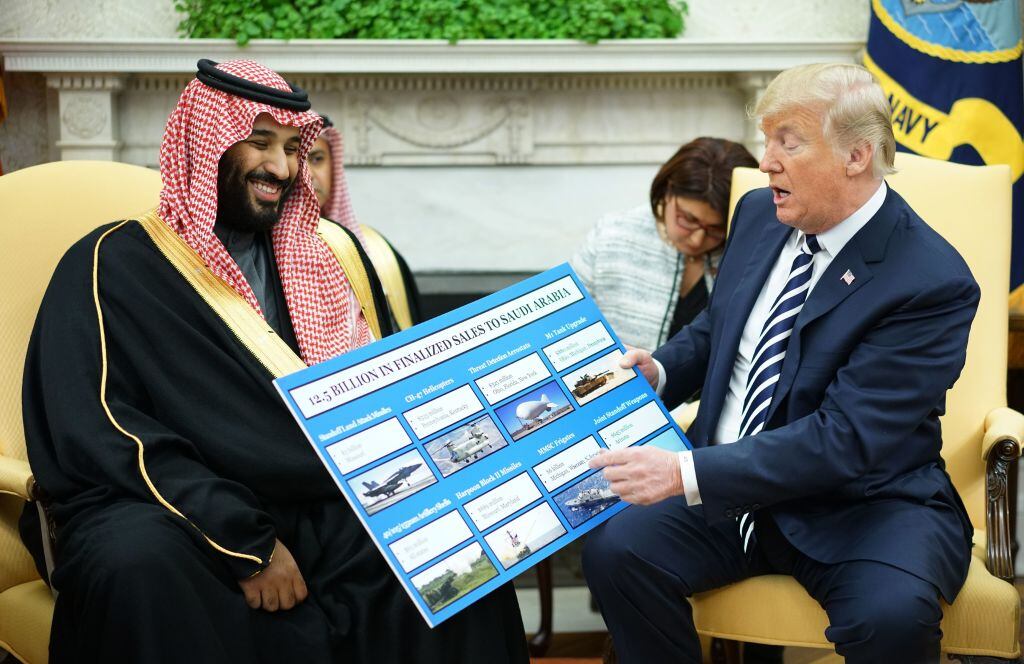WASHINGTON ― The Trump administration has rolled out a new set of policies governing its exports of military equipment abroad, with a focus on the idea that “economic security is national security.”
But the changes may fall short of what the defense industry was hoping for, particularly when it comes to the export of military drones.
The new rules, rolled out April 19, create broad new language emphasizing the need to consider economic benefits when looking at potential weapon exports to partner nations.
Peter Navarro, White House National Trade Council head, said this change will allow allies and partners “to more easily obtain” American security goods, which in turn improves the security of the Untied States while “reducing” the need for them to buy Chinese and Russian systems.
“For too long we have hamstrung ourselves and limited our ability to provide our allies and partners with the defensive capabilities they require, even when in the U.S. interests,” Navarro said.
Tina Kaidanow, principal deputy assistant secretary for political-military affairs, said the change represents “efforts to do things a little bit more strategically. We need to do, the U.S. government, a better job of strategic advocacy for some of our companies. We need to think about those areas where we can really enable sales oversea.”
Talking to reporters ahead of the announcement, both noted that there will now be a 60-day period for feedback from industry, which will help shape potential changes in the future.
However, the two offered few hard details about what would change for conventional arms transfers, and Navarro declined to say what economic impact could potentially be in terms of jobs or dollar figures. But industry is excited about the possible impact.
“This is a really big deal. These are issues that had typically been relegated to the second tier,” said Remy Nathan, vice president of the Aerospace Industries Association. “Credit this administration, credit [Secretary of Defense Jim Mattis] for putting partnerships in his top three priorities.”
The U.S. defense industry continues to dominate on a global scale. According to numbers from the Stockholm International Peace Research Institute, American accounted for 34 percent of total arms exports from 2013–17, with 98 countries buying American goods.
The second largest exporter in the world, Russia, accounted for 22 percent of weapon exports during that same period, with 47 countries as clients; China, the fifth-ranked exporter, represented only 5.7 percent of global exports, with 48 countries.
And while it is an imperfect measurement, the State Department cleared $75.9 billion in potential arms sales in fiscal year 2017, setting a new record. So far in FY18, State has ok’d over $55 billion in potential future sales.
Drone changes
But where the U.S. is seeing a steep rise in competition is in the unmanned vehicle sector, particularly from China, who has made inroads into the traditionally U.S. dominated Middle East with their cheaper UAVs.
With today’s announcement, the U.S. has made two tweaks to how it handles drone exports. The first is opening up the opportunity for companies to sell systems via Direct Commercial Sales process, under which a company and another nation can directly negotiate, rather than requiring a more formal Foreign Military Sales process, where the U.S. government acts as a go-between. DCS sales are seen as faster than FMS sales.
Secondly, the government is eliminating rules that marked unarmed systems with laser-designator technology as “strike enabling,” which put them in the same category as armed drones, and hence received higher scrutiny.
Kaidanow said the goal was to make sure “U.S. industry faces fewer barriers and less confusion when they are attempting to compete against other countries and marketing and selling those similar systems to our partners. “

While those changes will be welcomed by the UAV industry, it falls short of what was expected and hoped for by major producers of military drones. It had been expected that the new policy would reinterpret the “strong presumption of denial” clause in the Missile Technology Control Regime, an international arms control agreement among 35 nations that governs the export of missiles and drones, a second source explained.
The current clause makes it difficult to approve the sale of category-1 drones capable of carrying 500-kilogram payloads for more than 300 kilometers. The Obama administration had set a standard of how it interprets the MTCR language that some in industry have complained is too strict, and had expected to see changed with this policy a “presumption of approval” for a specific set of allies and partners in Europe, the Middle East and the Asia-Pacific region.
However, changes to the MTCR remain on the table for the long term, with Kaidanow saying: “We are looking to ensure that the MTCR keeps pace with the dynamic quality.”
While she did not explain what changes to the MTCR may come, American officials in October floated a whitepaper to allies proposing that any air vehicle that flies under 650 kilometers per hour would drop to “category-2” and thus be subject to approval on a case-by-case basis, as opposed to having to follow the more strict “category-1” policies.
Despite fears from nongovernmental organizations that human rights concerns would be weakened under the new policy, both Navarro and Kaidanow pushed back at the idea human rights were being weakened under the new policy, with Kaidanow saying “nothing” had changed from that regard.
Navarro added that the policy continues to “require enhanced end use monitoring, directing the federal government to work with partners to reduce civilian casualties in conflict and championing principals of human rights in international law, including the law of armed conflict.”
Aaron Mehta was deputy editor and senior Pentagon correspondent for Defense News, covering policy, strategy and acquisition at the highest levels of the Defense Department and its international partners.
